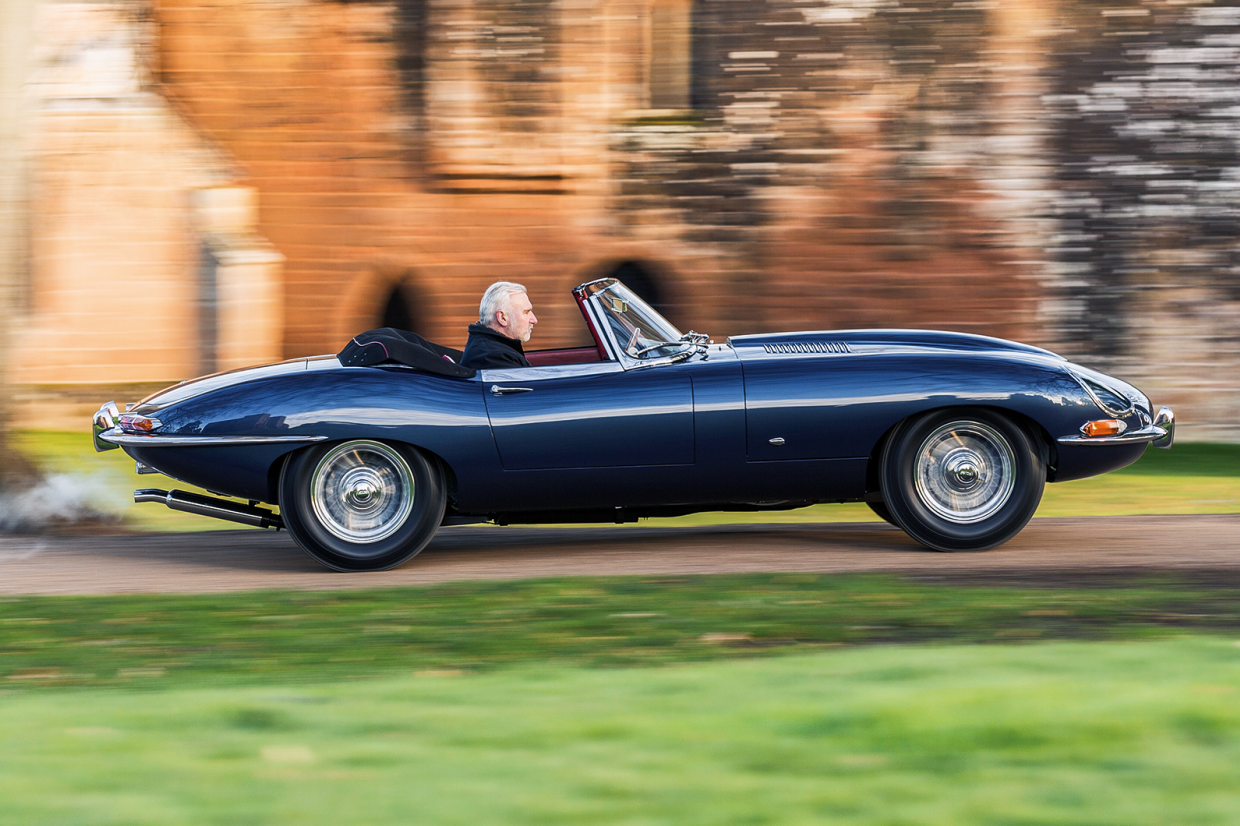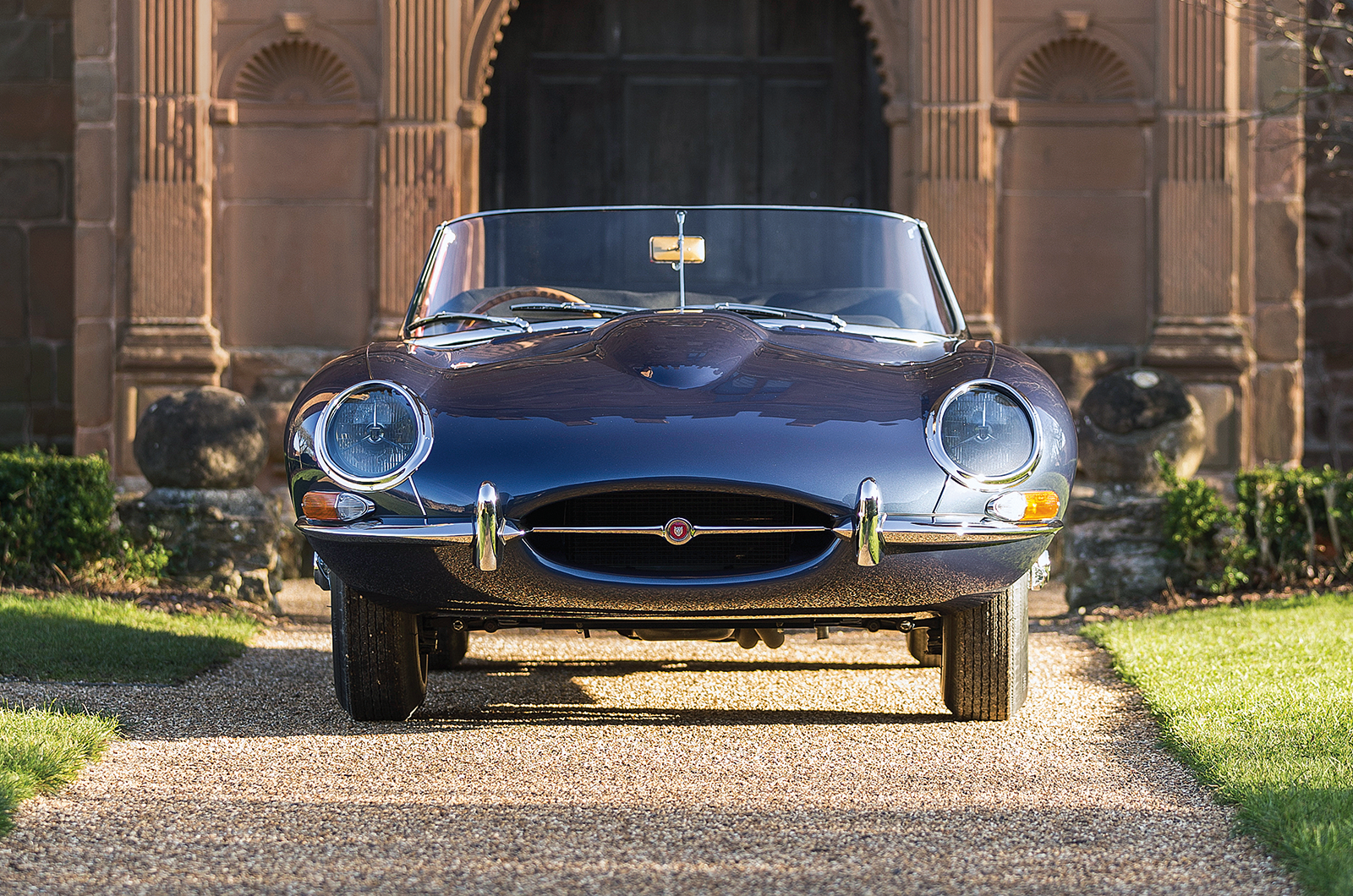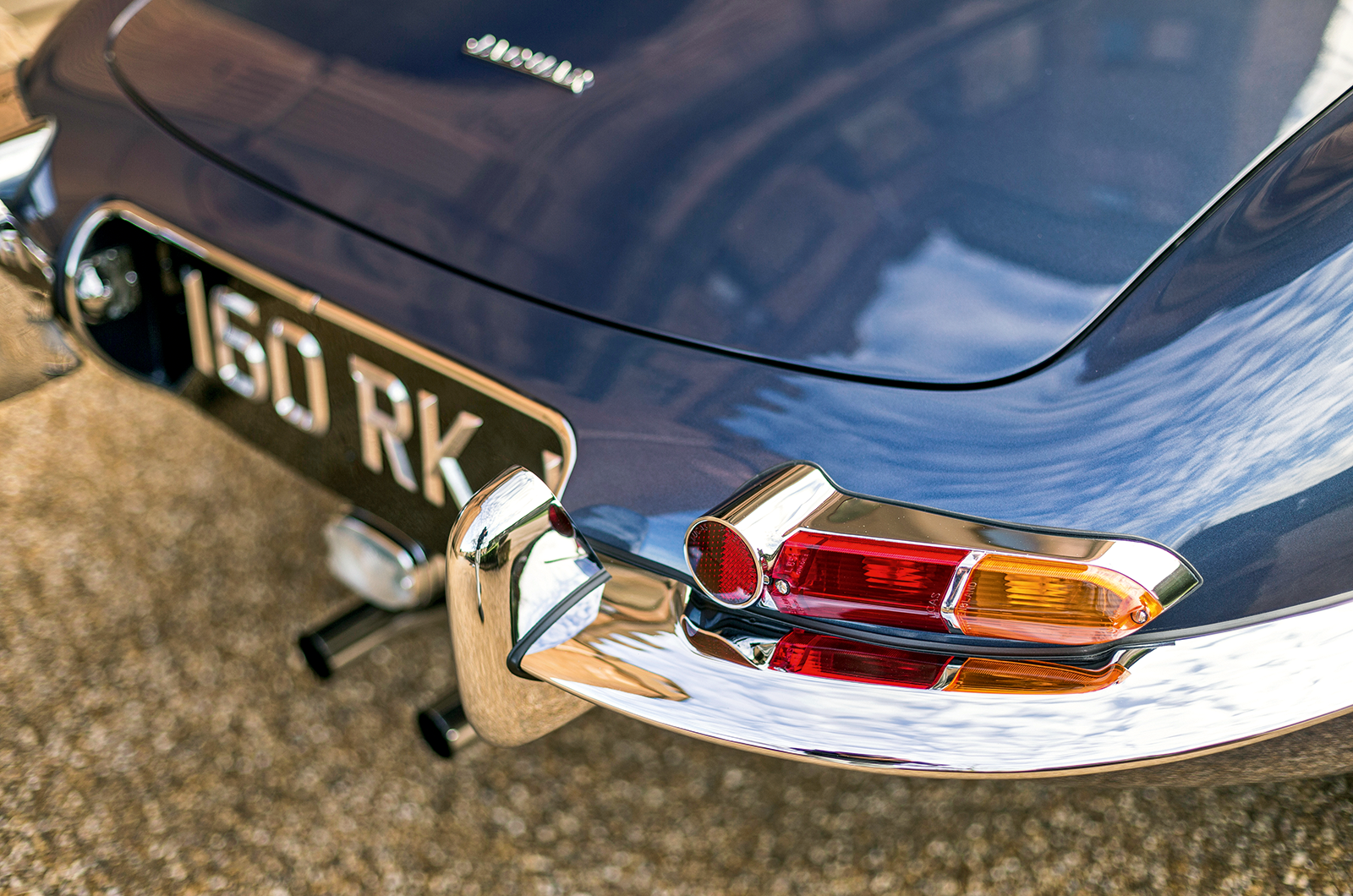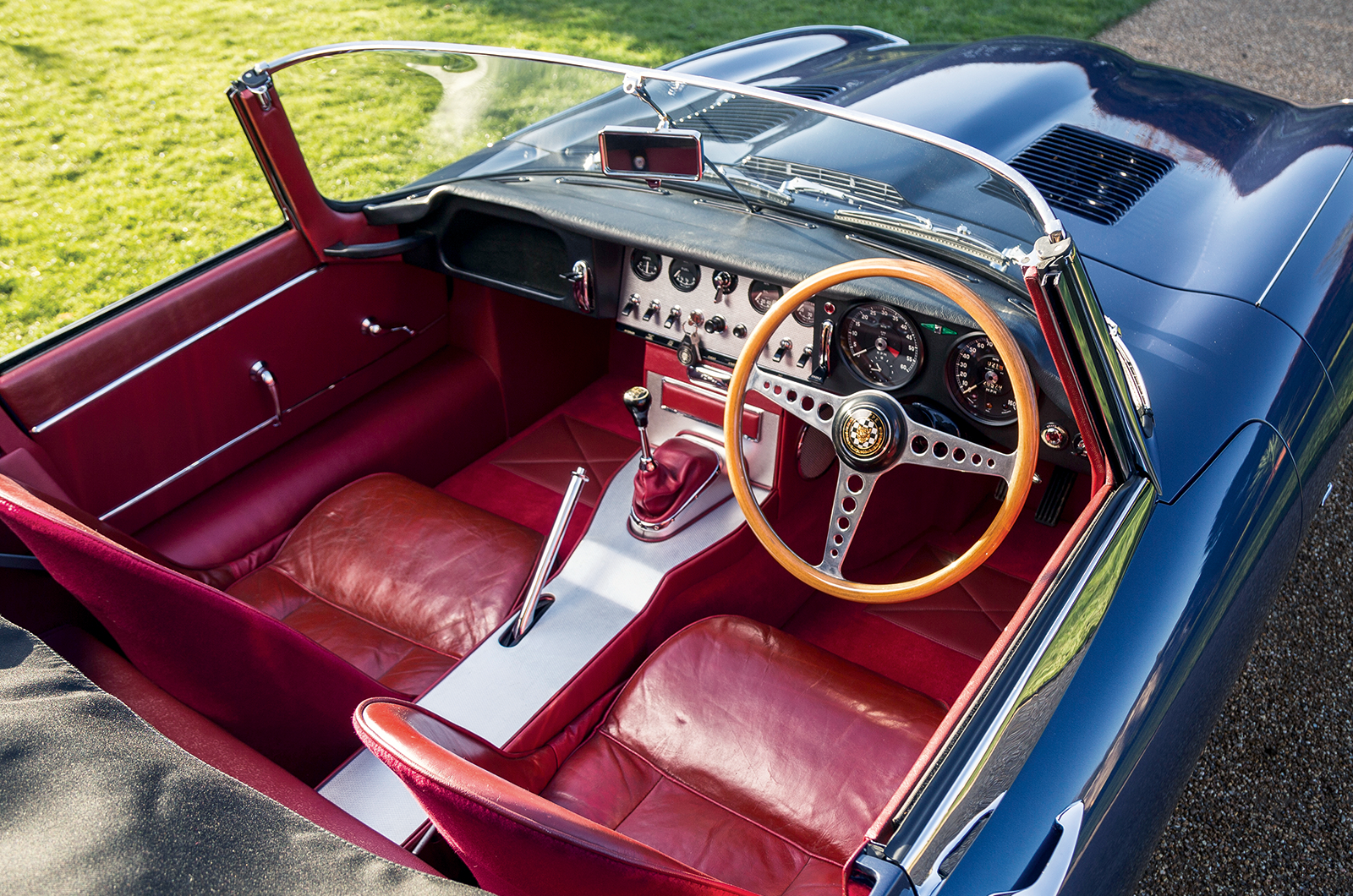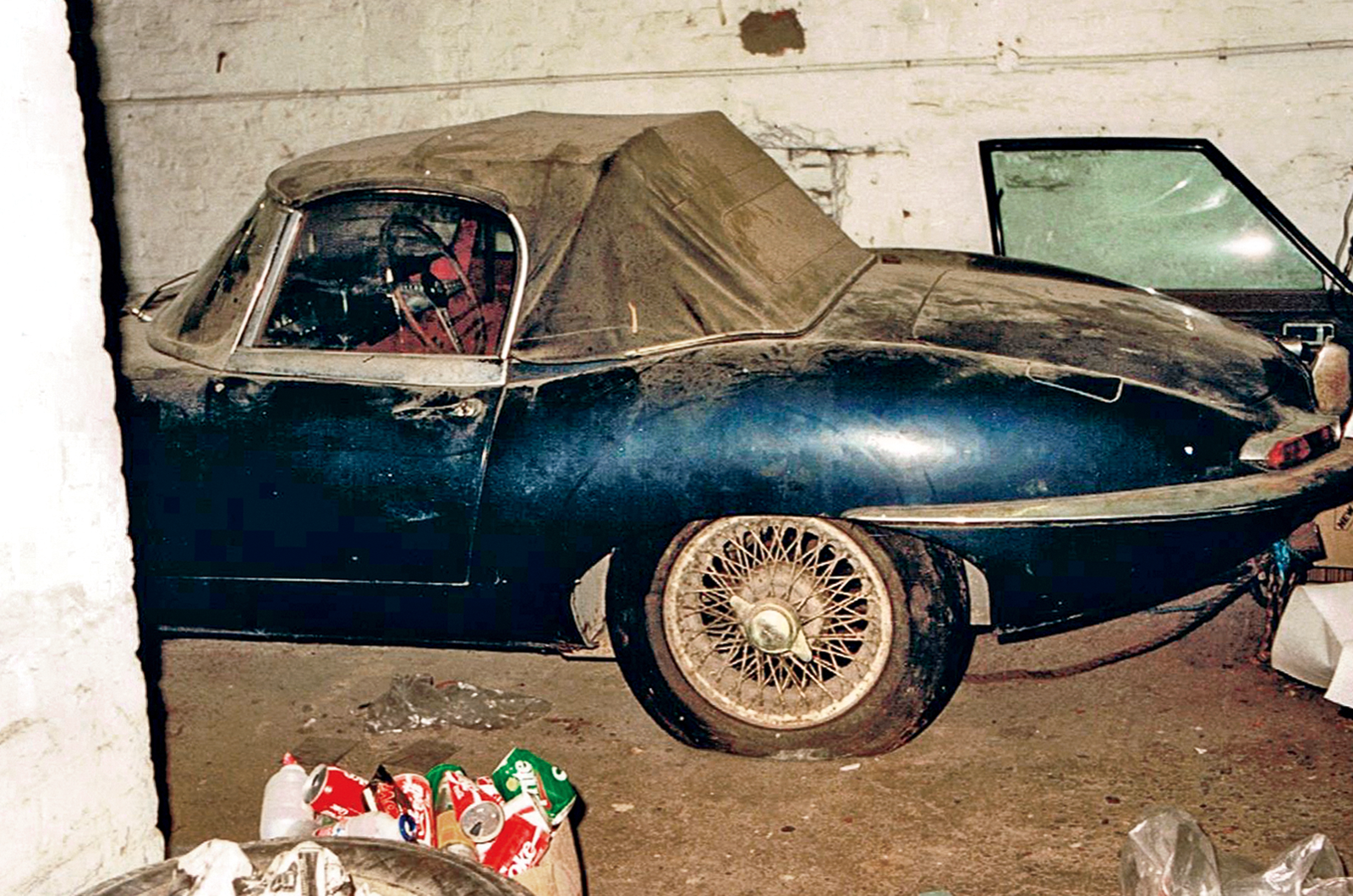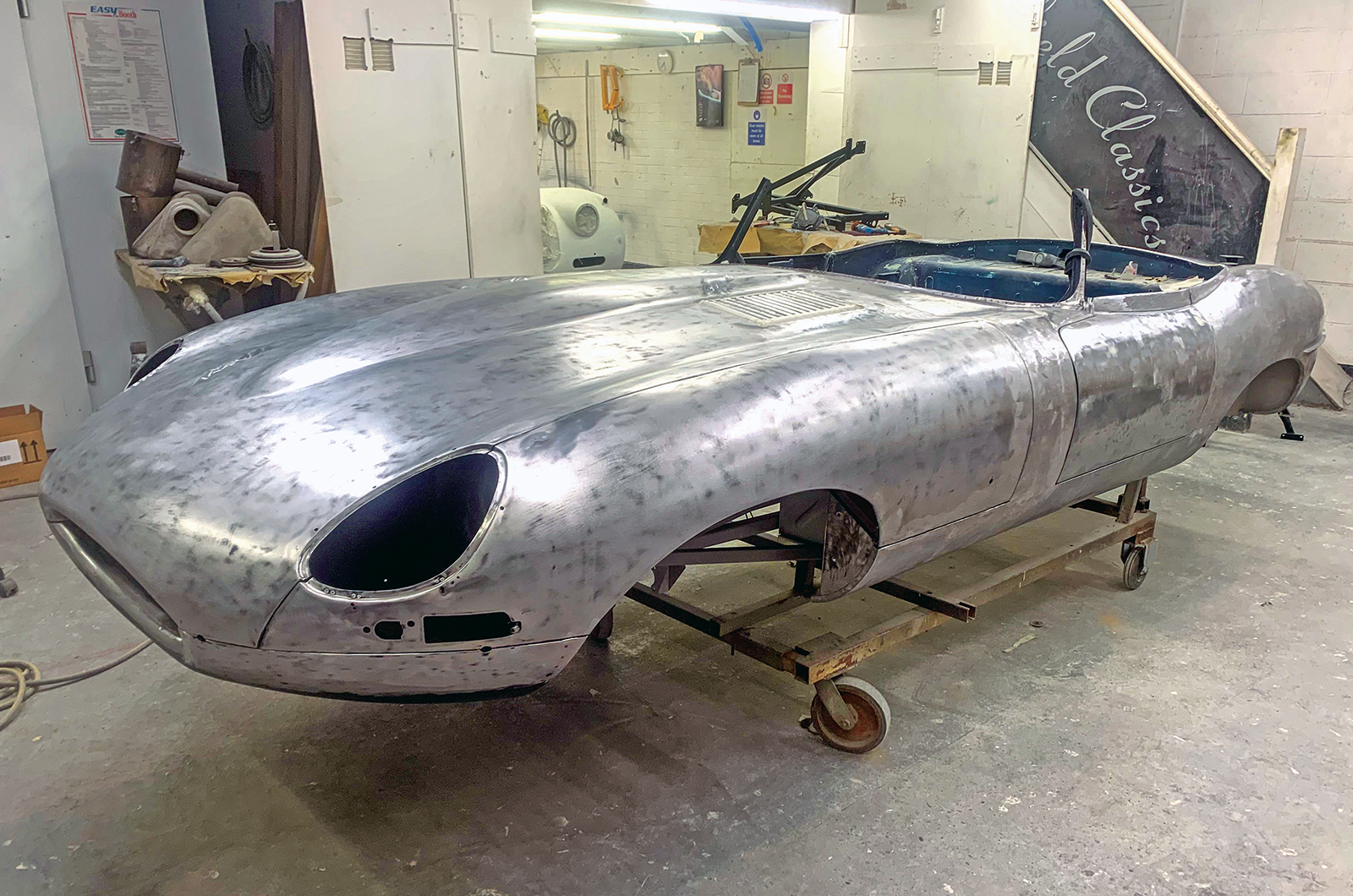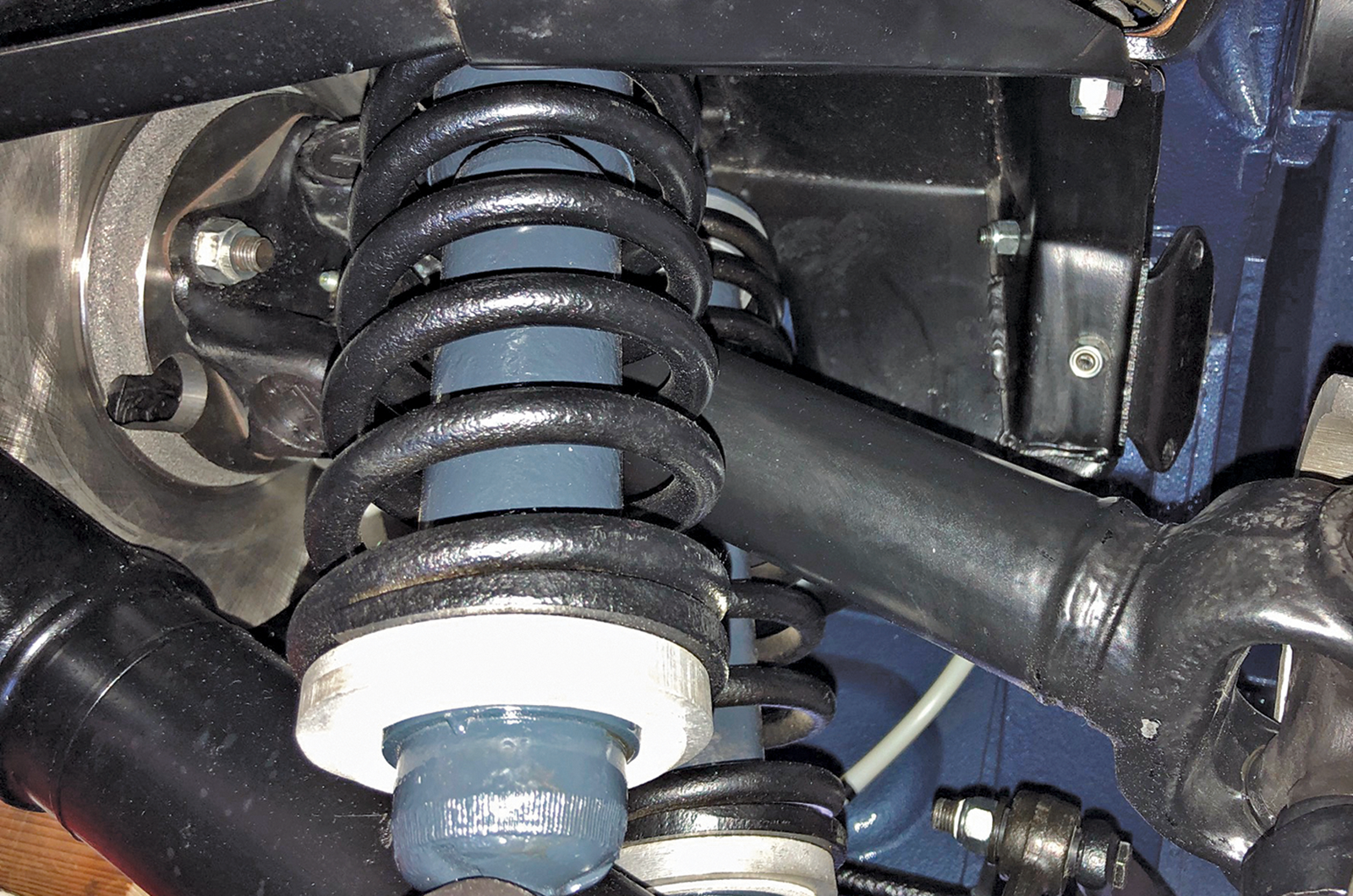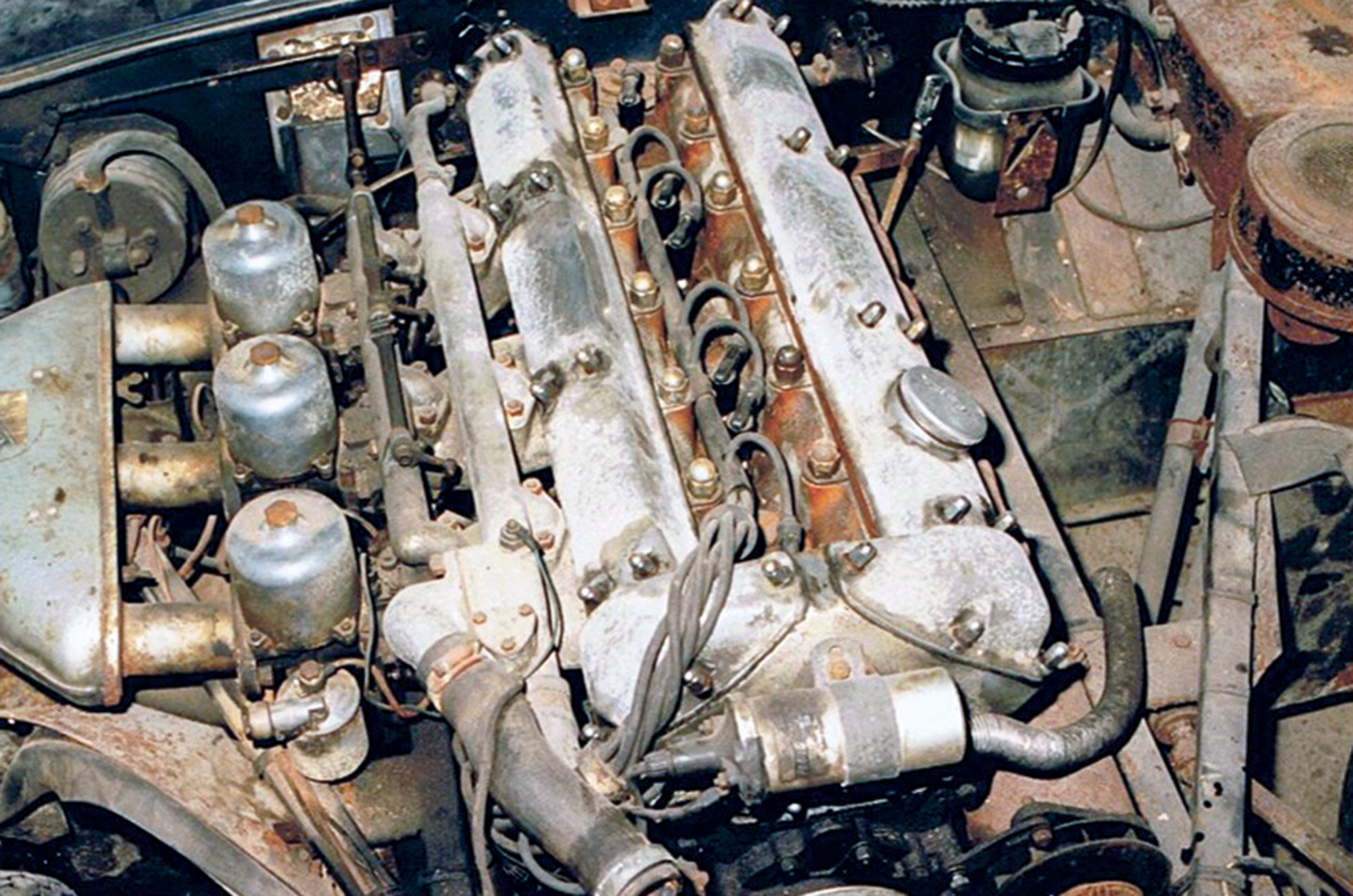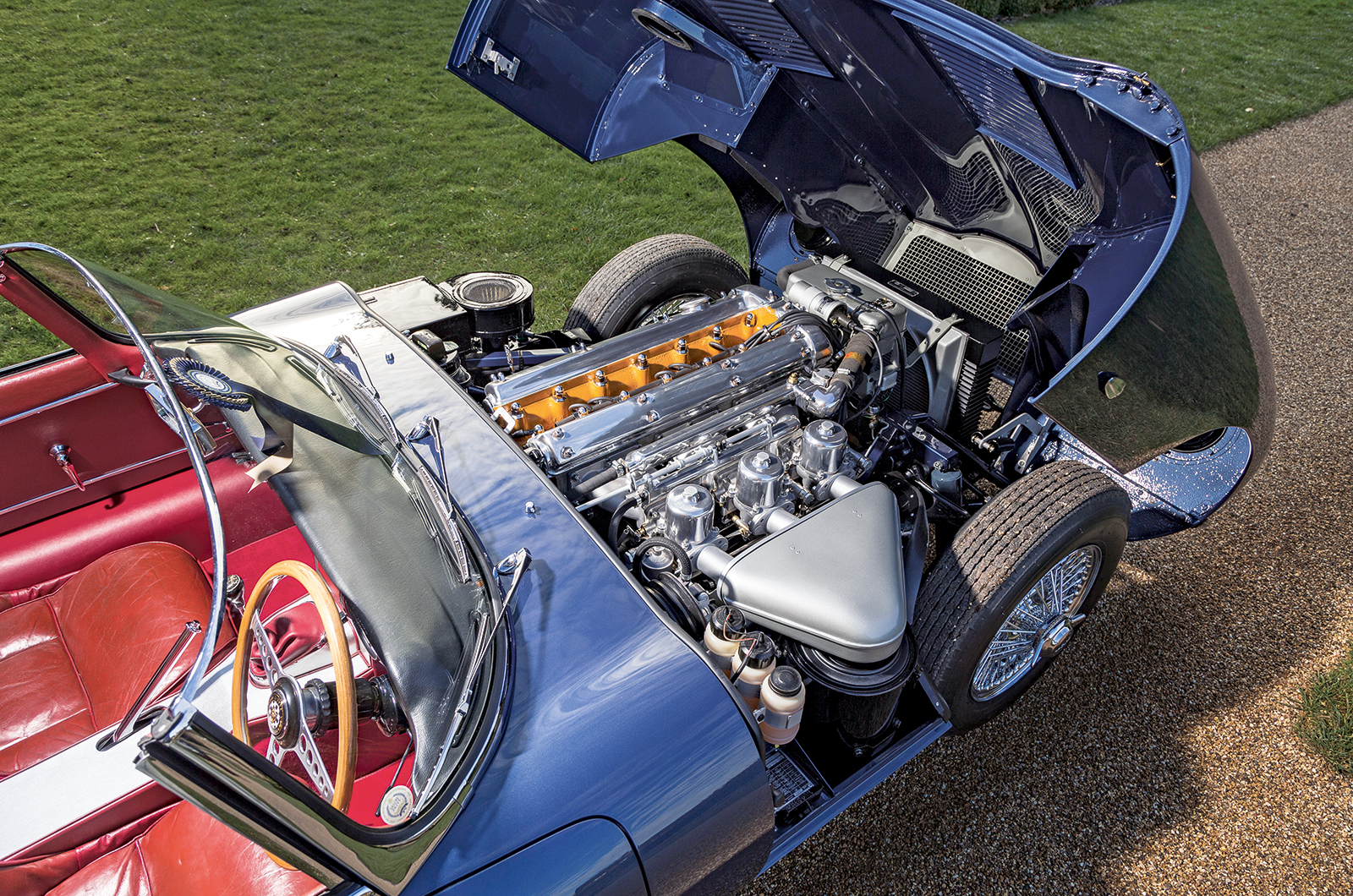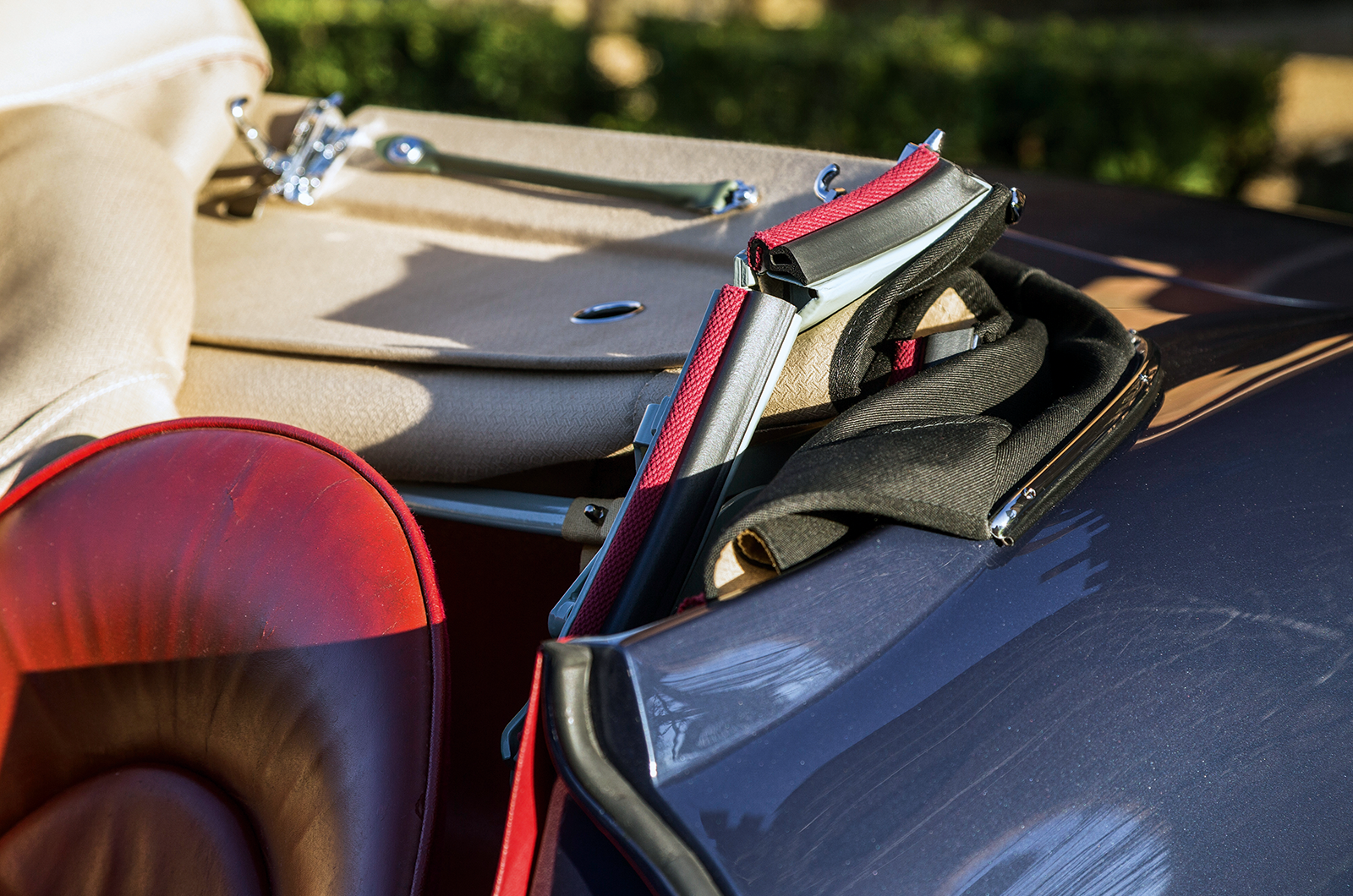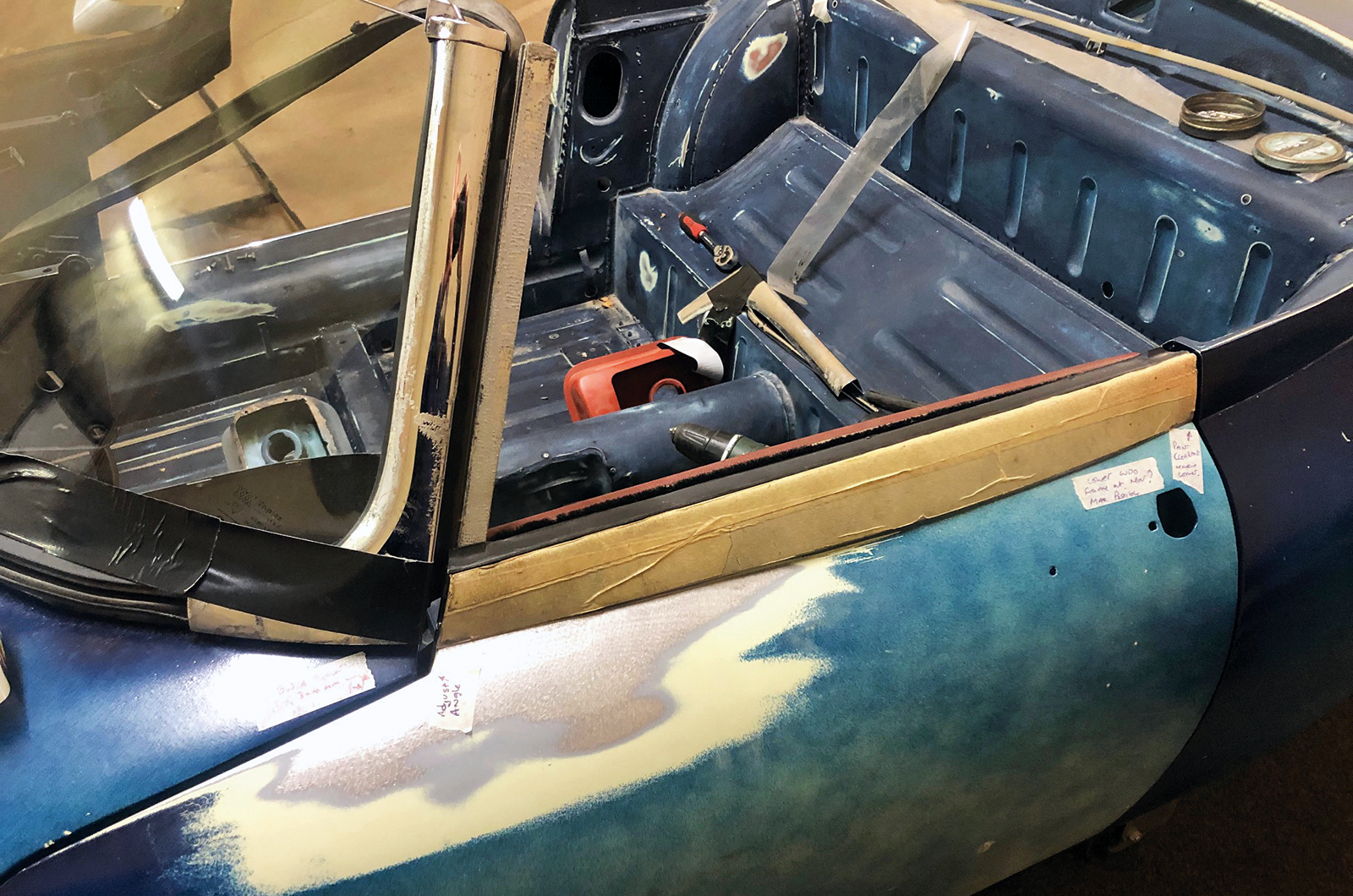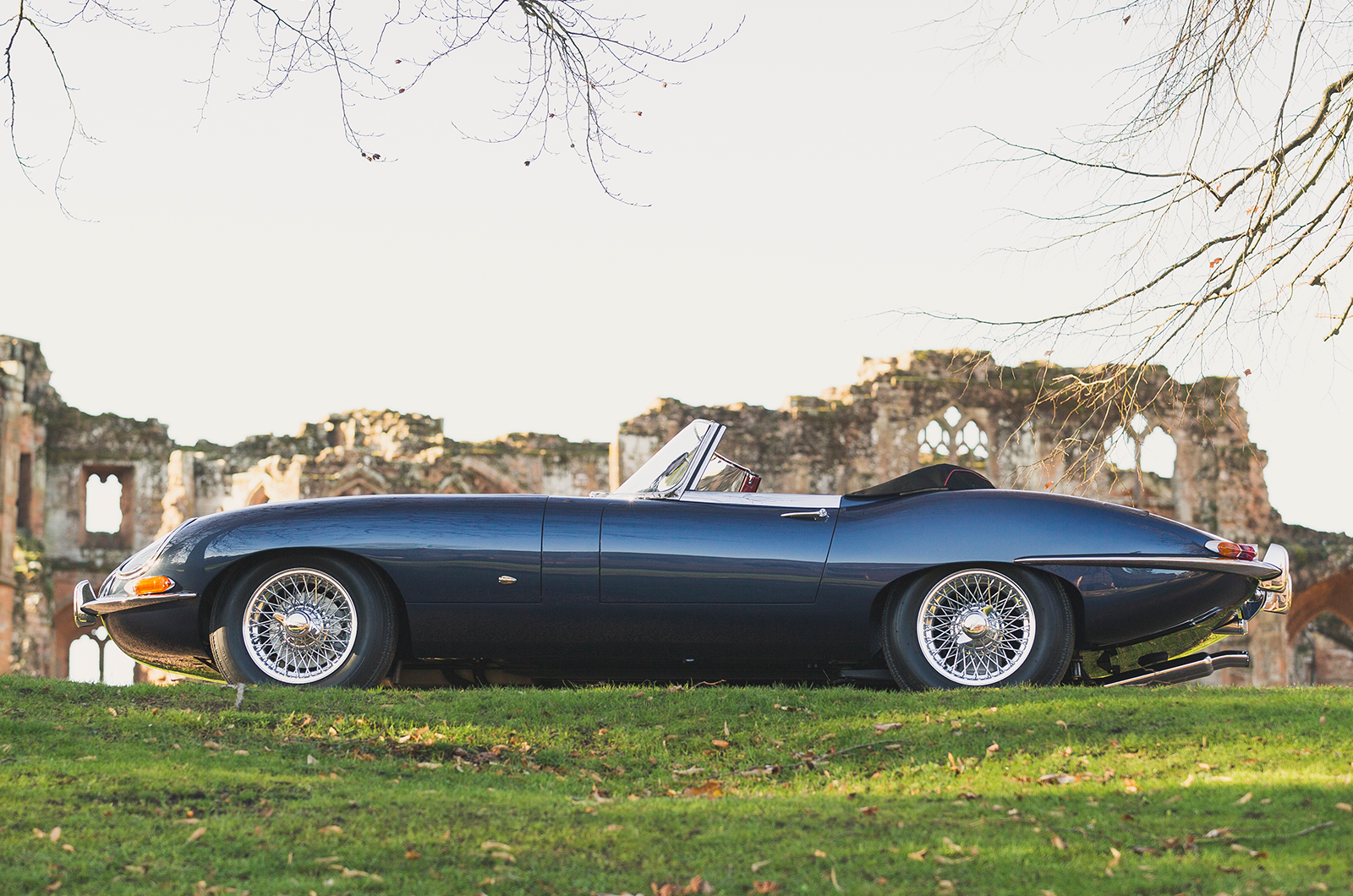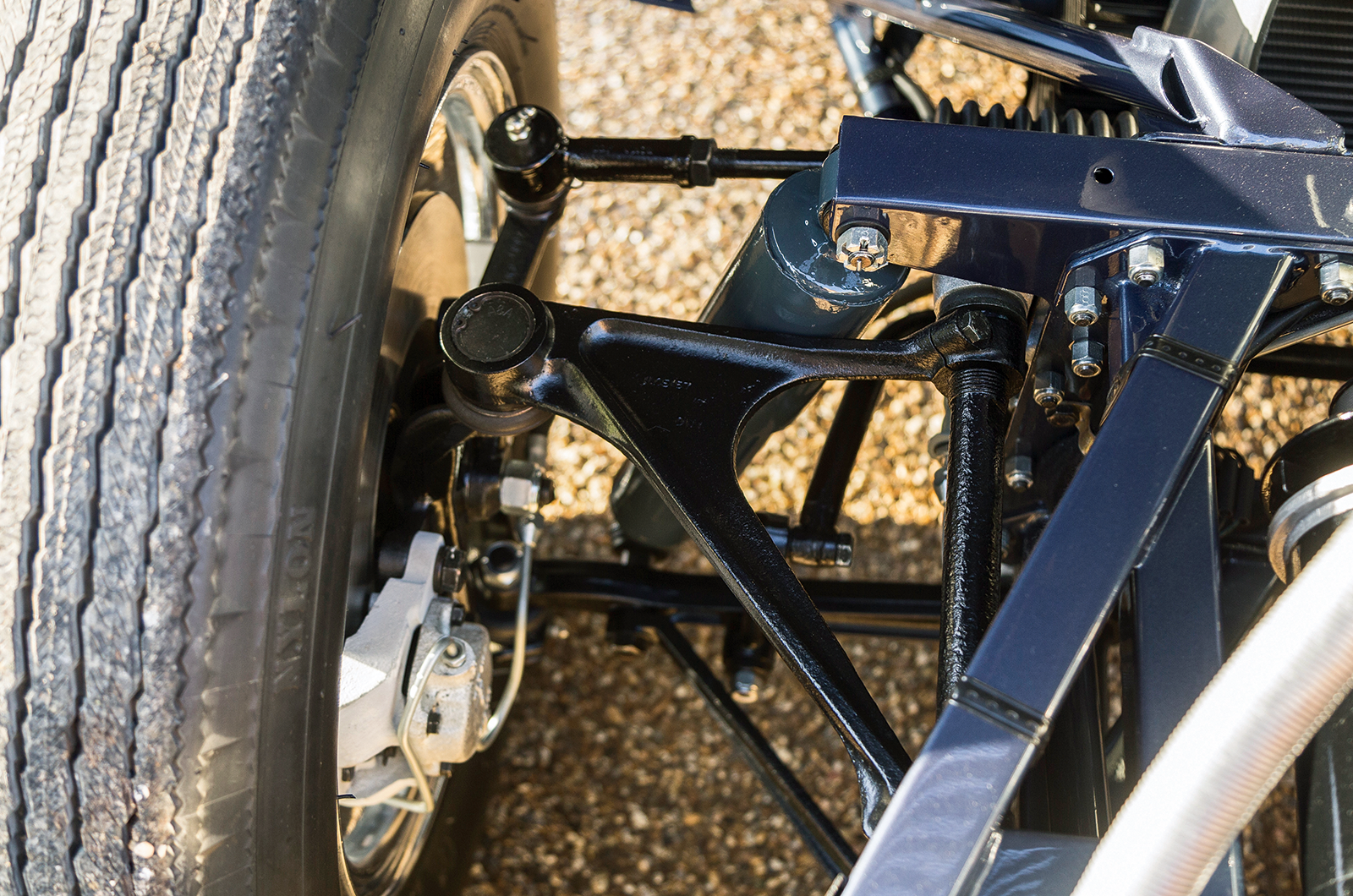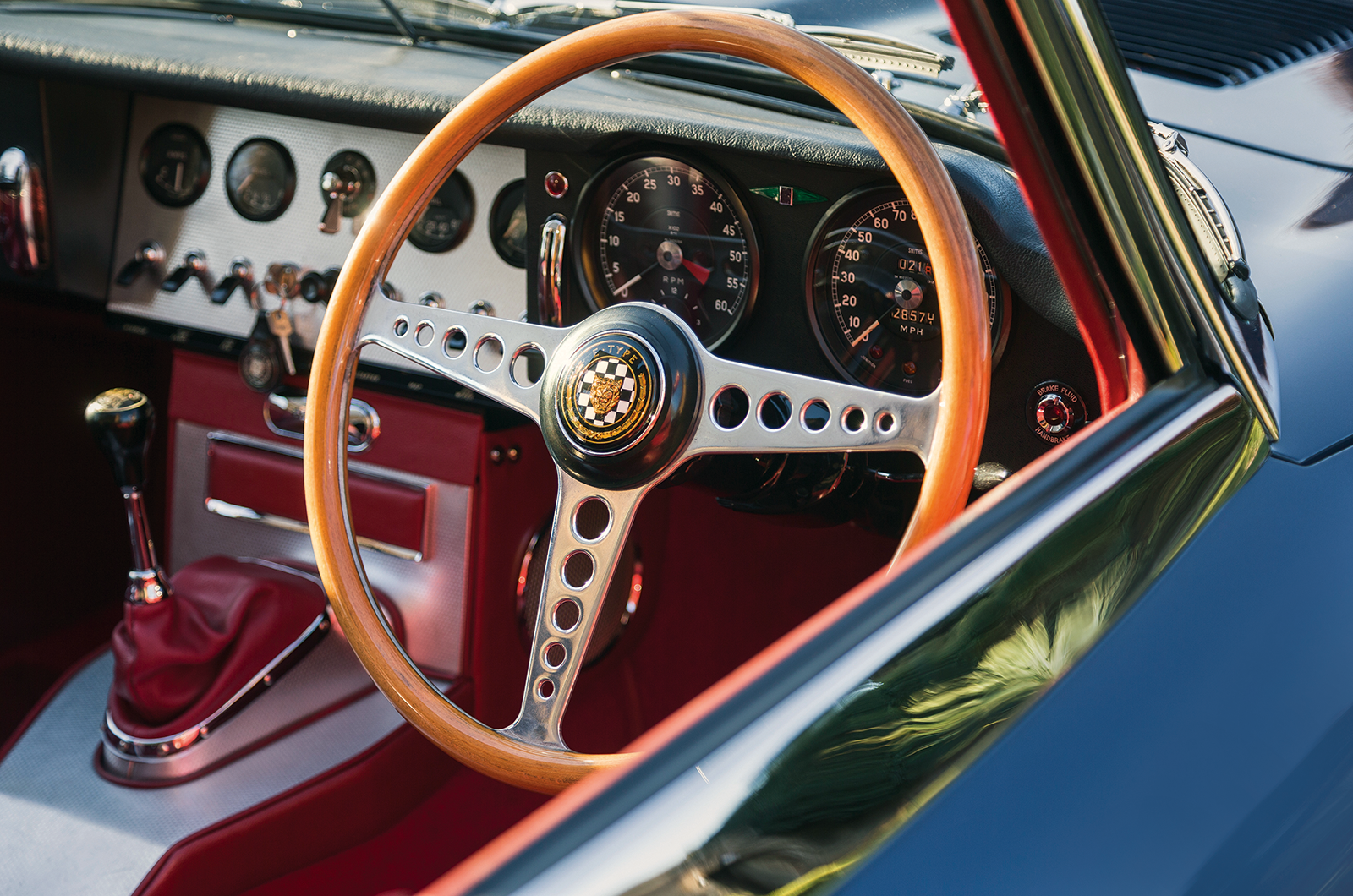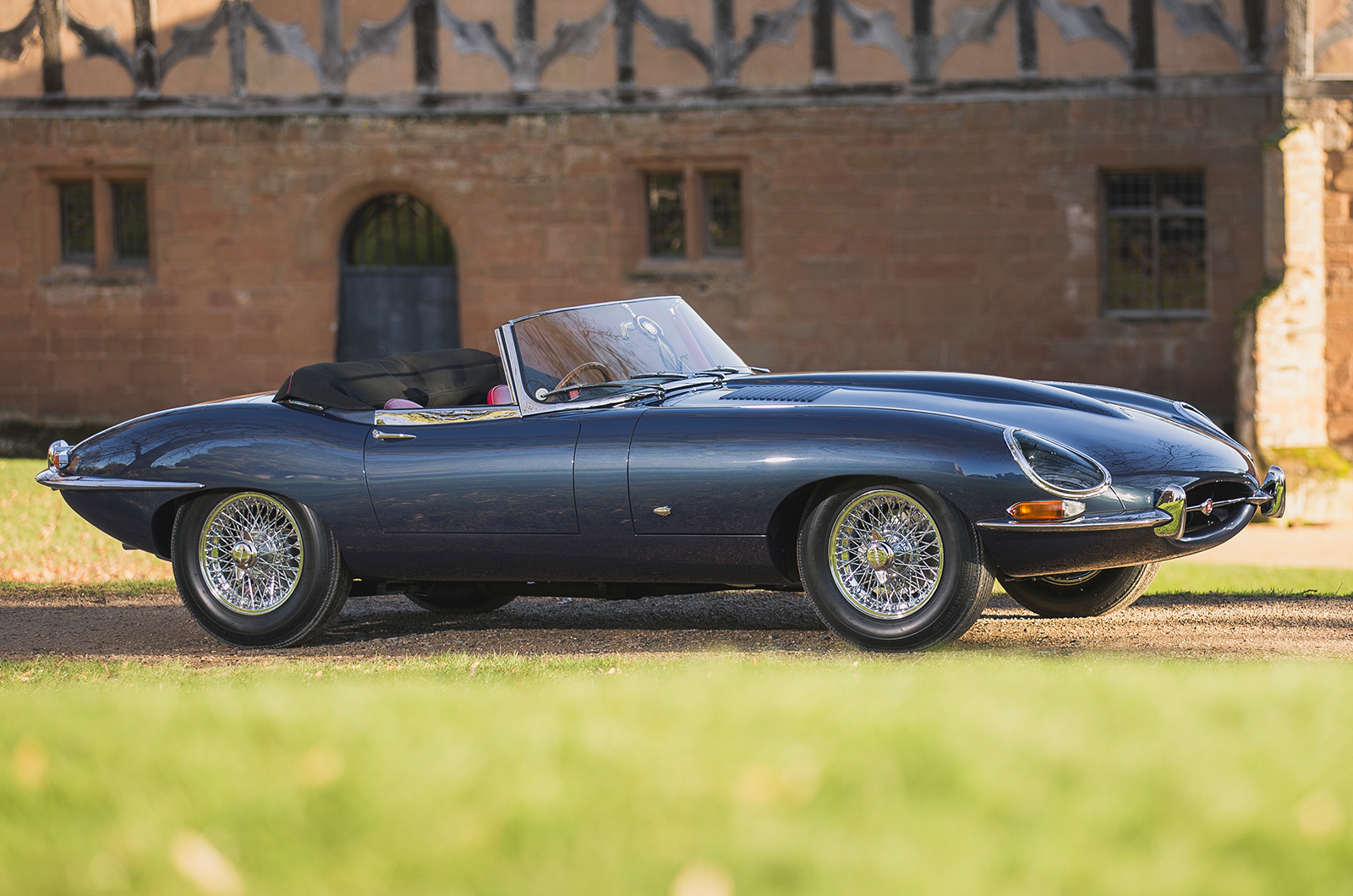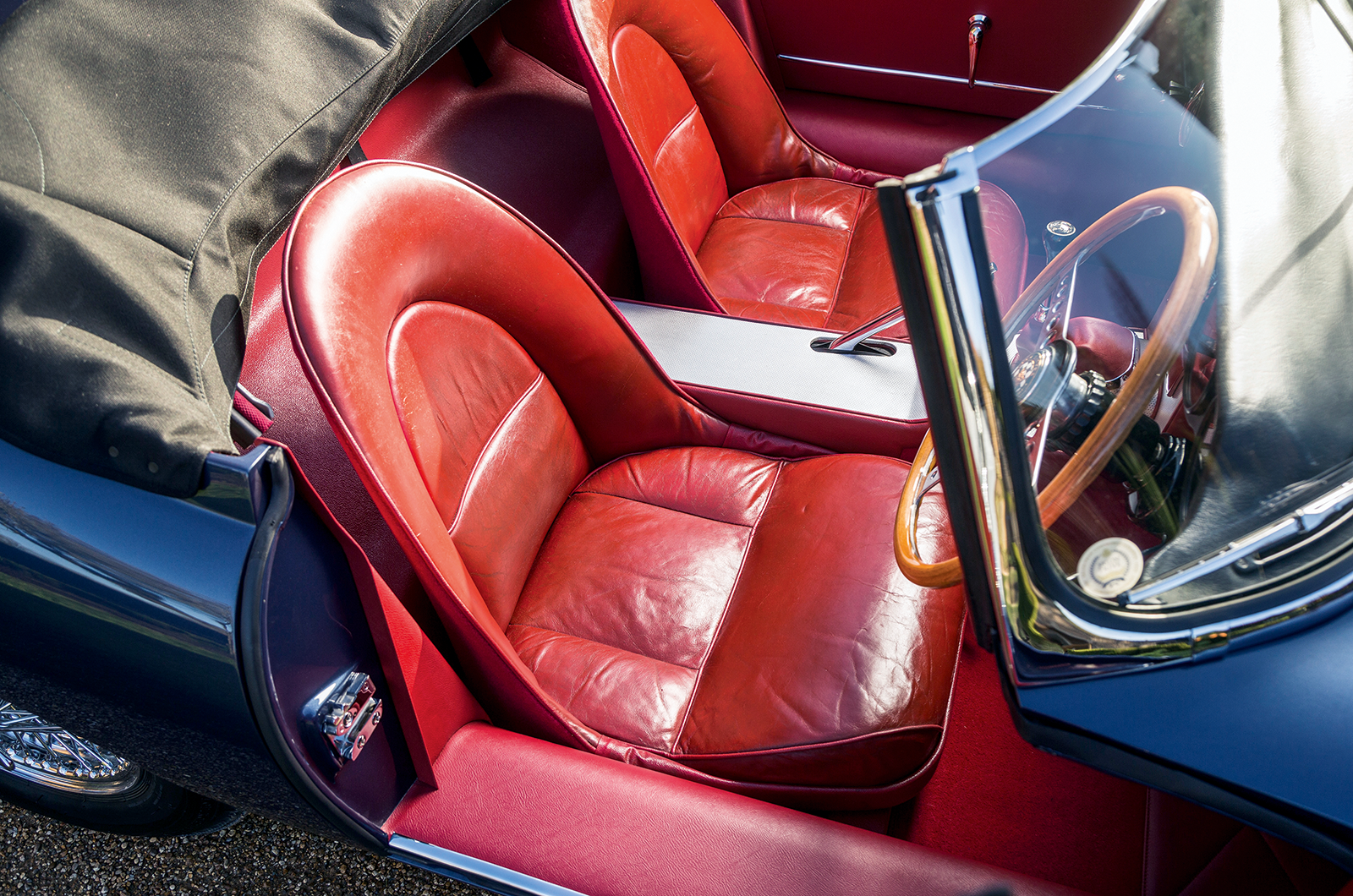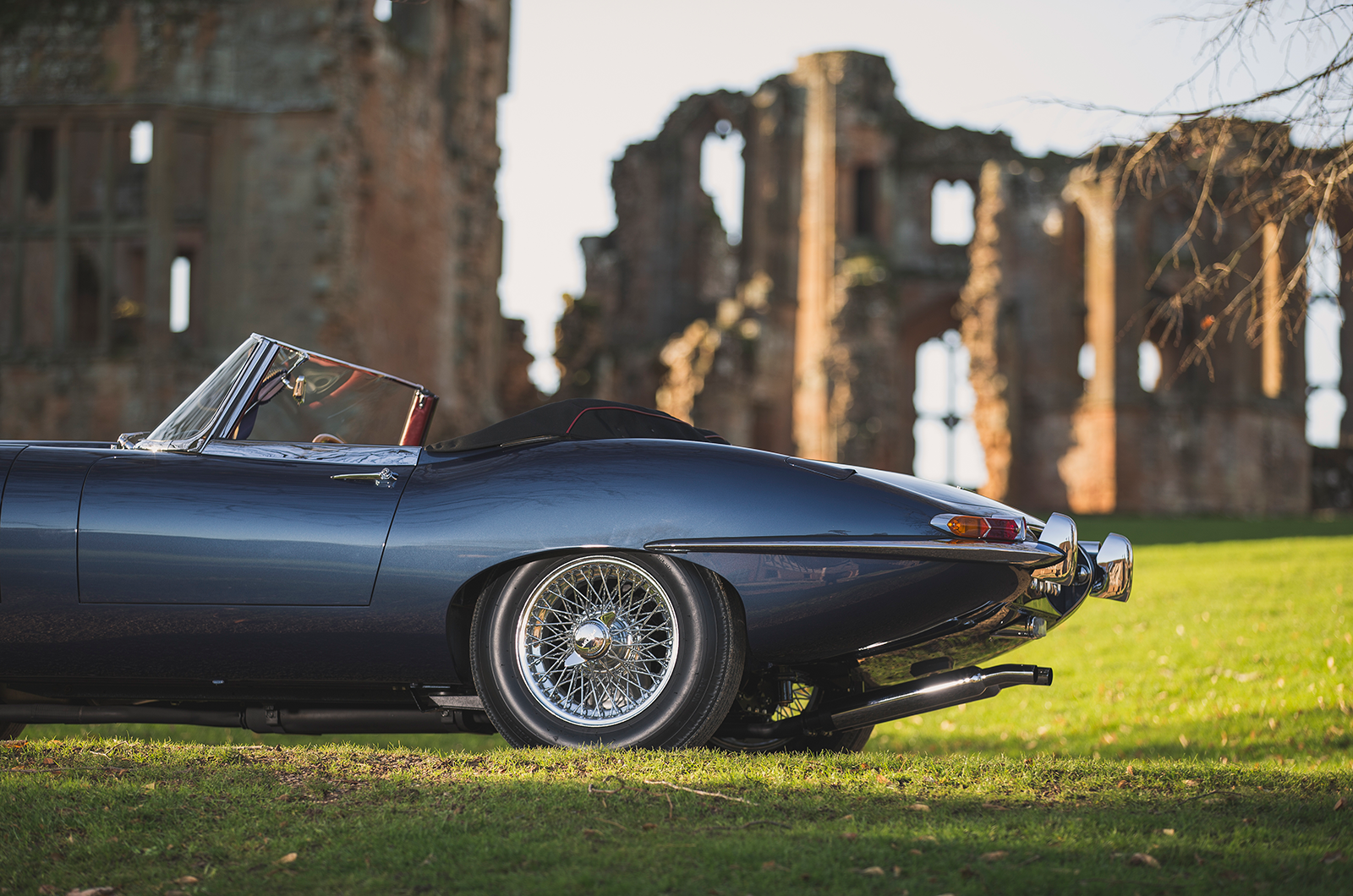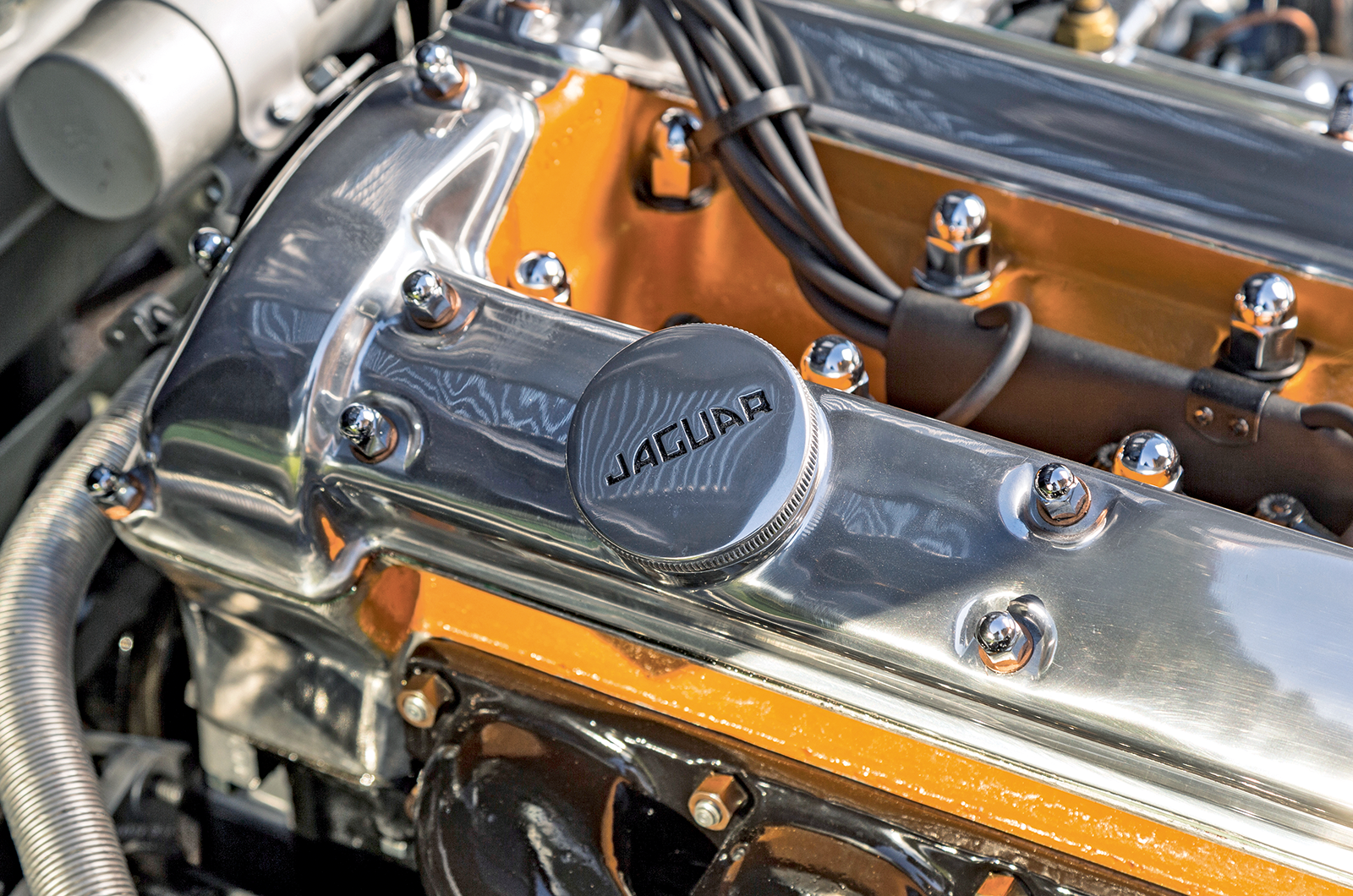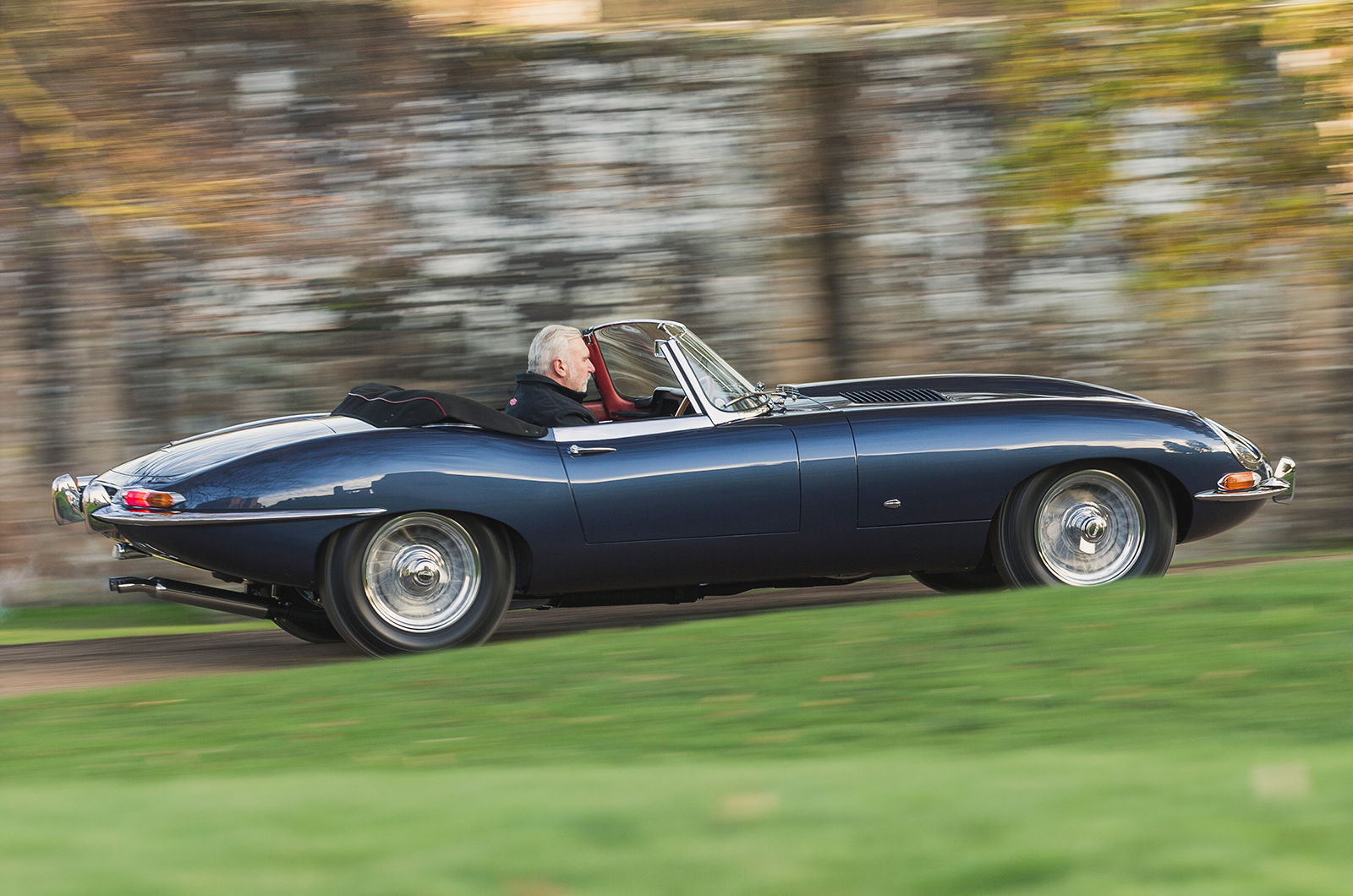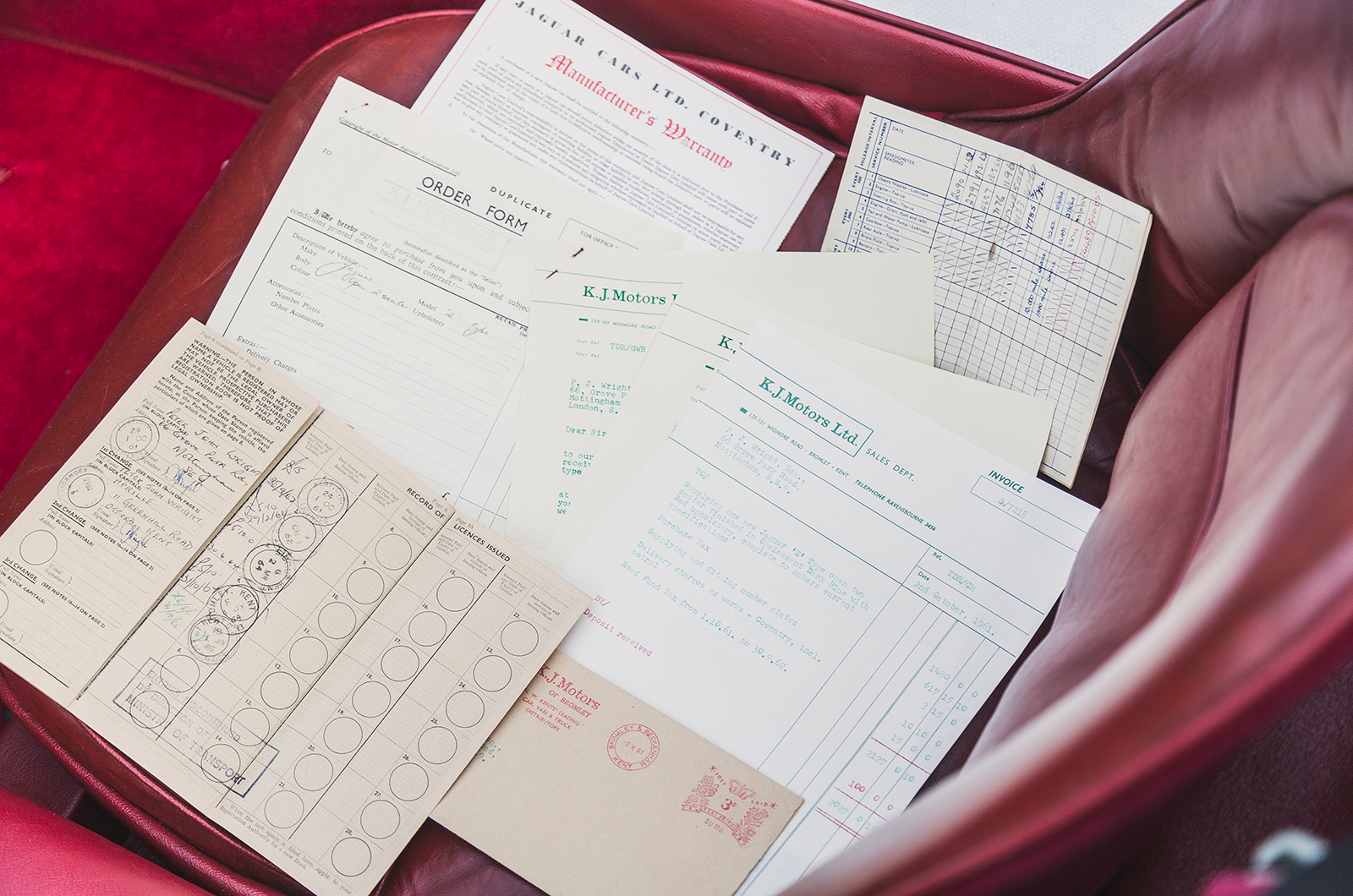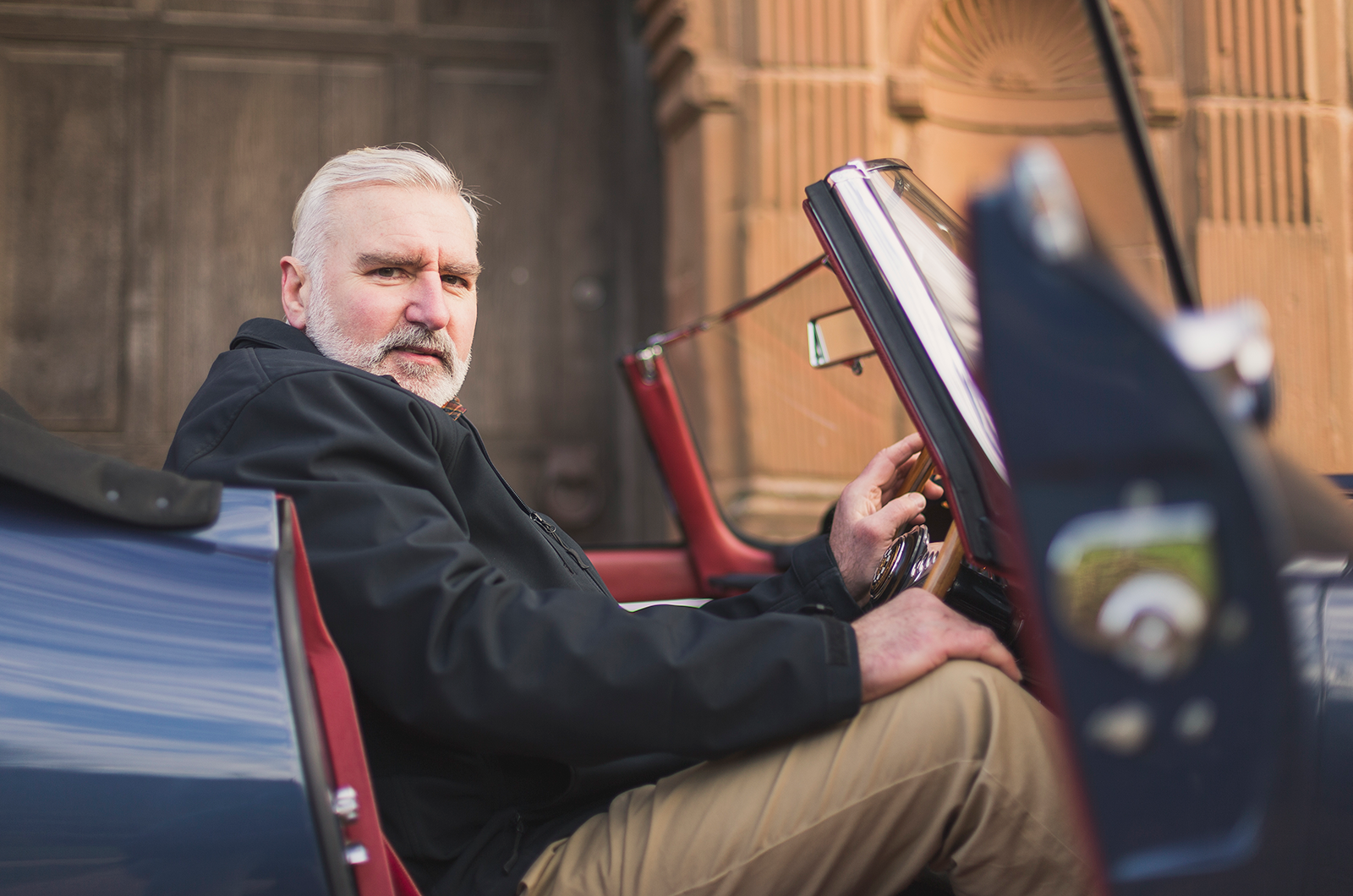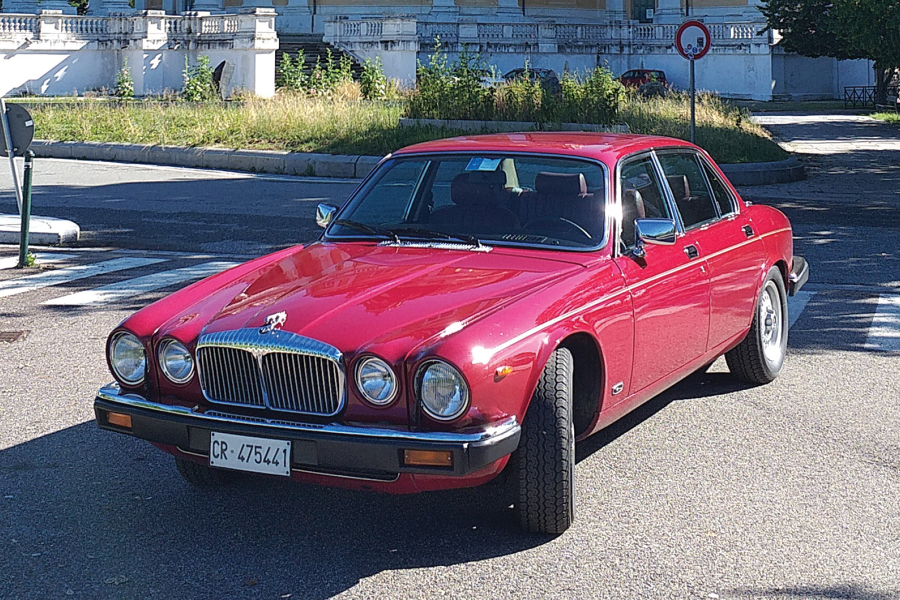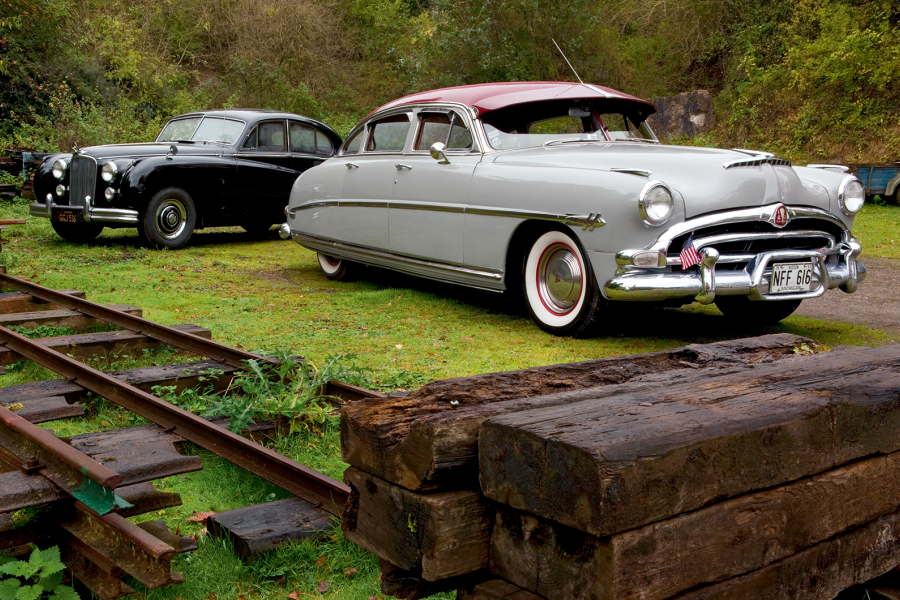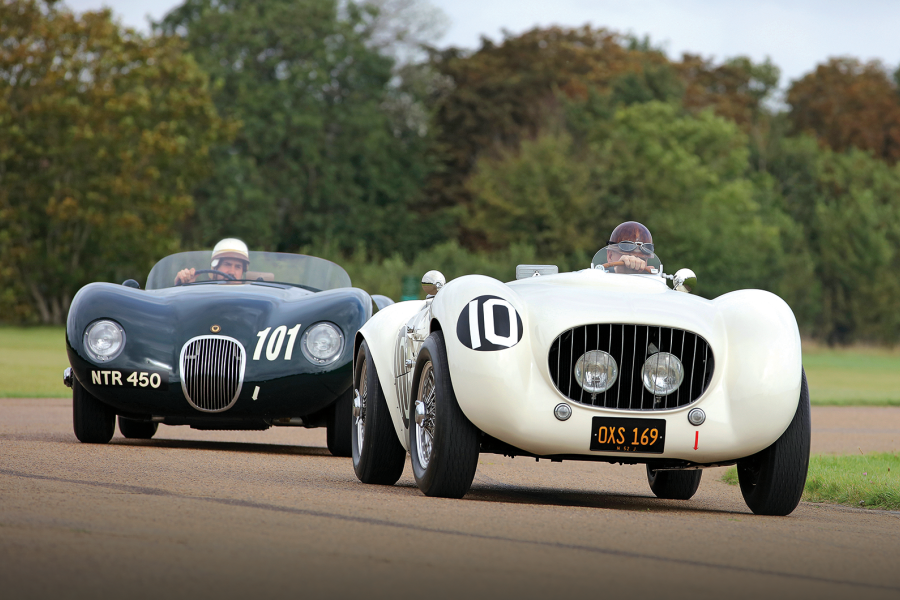For the cabin, Bridges was particularly pleased to unearth a small supply of the original-spec coarse-grain vinyl trim and the correct – but rarely seen – A-post seals.
However, his main focus was on retaining as much of the original, 28,500-mile interior trim as possible, conscious that far too many rare, salvable items are often lost during restoration, when the easy alternative is throwing a bundle of money at a rip-it-out-and-start-again retrim.
Fortunately, thanks to the low mileage, much of the interior had survived well.
The Jaguar’s dashboard and fascia from 1961 were retained
The beautifully patinated seat covers and steering wheel are the originals, carefully refurbished.
The dash – including the top panel and fascia – are from 1961.
Likewise, the door-top rolls – and a certain amount of the Hardura finishes beloved by Jaguar in the ’60s – are all those the car was born with.
Ditto the A-post and rear cabin finishers.
Bridges’ painstaking work has produced a ‘reference quality’ early E-type roadster
The interior chrome is all original other than the rear hood brightwork – which is unique to these very first cars, and for which new tooling had to be made.
That wasn’t cheap, but it at least means that anyone else with Bridges’ passion for originality can get their early E-type spot-on.
For safety reasons Bridges didn’t go as far as to retain the factory wiring loom, but he did re-use the terminal boots, which are no longer available.
After some careful reinforcement, Bridges saved the leather from the Jaguar’s original factory seats
He had to admit defeat when it came to the Marston radiator, which had 27 leaks and was beyond repair so was replaced with an accurate reproduction item.
The brake and clutch cylinders, boot mat and shock absorbers were all straightforward off-the-shelf items – new, but indistinguishable from the originals – as were consumable service items such as the exhaust system and oil/air filters.
Bridges even made sure that all the nuts and bolts used were of the correct UNF type, marked ‘PPP’ or ‘0000’ and with GKN, BEES, LINREAD or NEWTON manufacturers’ identification.
The cast-aluminium letters from the E-type’s original Ace numberplate were ground off and polished
He researched all the finishes, too, be they black for the nuts, bolts and front suspension components or ‘bright’ for clips.
As work progressed, Bridges was surprised at how many parts were date-coded, including the Lucas C45 dynamo, the wiper and washer motors, and even the dashboard toggle switches.
The odd locking cage-nuts for the accelerator bracket fixings were eventually matched, thanks to a helpful Spitfire restorer, to a part used on the Bristol Beaufighter.
New ones were sourced at huge expense, but they do add to the ‘pre-production’ feel of so much of this car.
160 RKJ was among the first right-hand-drive Jaguar E-type roadsters built
The bonnet, for instance, still shows the planished joint on its underside between the front and rear sections, dating from the time when Jaguar had yet to invest in the tooling to build the E-type in bigger volumes because it didn’t really know for sure if it was going to sell.
Luckily the bonnet needed very little work, which was testament to the fact that 160 RKJ had avoided the 1960s and ’70s accident damage that usually resulted in new panels.
The main body had a proliferation of pop-rivets not found on later cars: these were recorded and reproduced where appropriate, with the help of master panel-beaters Andy Hall and Sam Grudgings at Vintage Machines in Rugby.
‘Every detail – down to the last nut, bolt and screw – is absolutely correct’
It would have been easy enough to simply replace the worn rear hubs but, because they were of a design unique to these very early cars, Bridges elected to have them 3D-scanned and new ones machined, at considerable expense.
The bulk of the build took place at Bridges’ home in warm, dry, but not surgical conditions, yet working to standards more akin to aircraft than motor-car restoration.
He is keen to point out that his E-type was assembled absolutely “by the book”, with every safety-critical joint correctly torqued and chart-recorded.
Bridges’ restored E-type took top prize at the model’s 60th-anniversary event
Some major mechanical components had to be farmed out because of the limited timeframe.
The engine, gearbox and rear axle were rebuilt by William Heynes – grandson of former Jaguar chief engineer Bill Heynes, no less – who specialises in conserving originality in a way that chimed perfectly with what Bridges was trying to achieve.
These low-mileage assemblies were sympathetically rebuilt to bring everything back into tolerance, while avoiding swapping parts that didn’t need changing: “The gearbox and rear end just needed cleaning and reassembling.”
Meanwhile, Bridges got in touch with the Jaguar’s first owner, Peter Wright.
The son and daughter of Peter Wright (the car’s original owner) gifted Peter Bridges the E-type’s original documentation
Although he sadly didn’t live to see his old car finished, in past conversation with its current owner Wright recalled the day he topped an indicated 150mph in 160 RKJ on a pre-speed-limited M1.
The final piece of the puzzle dropped into place when Bridges met Wright’s son and daughter at the 60th-anniversary meeting.
They remembered being driven in the car by their father, and couldn’t hold back the tears when 160 RKJ won first prize.
Just when it seemed as if the day couldn’t get any better, they presented Bridges with the original buff logbook, warranty card, service book, owners’ handbook and brochure, plus all the KJ Motors documentation that Wright had hung on to for 50 years.
After many decades, Peter Bridges has completed his quest to build his perfect Jaguar E-type
In a world where delayed gratification is becoming a thing of the past, it is refreshing to encounter somebody who has taken the time to get something just right and ended up with exactly what he wants.
Well, I say exactly: I doubt Paul Bridges will ever be completely satisfied.
It takes a certain mindset to be the custodian of a car such as this: the real pleasure and satisfaction is in the rebuild process – and the research and preparation leading up to it – rather than the ownership.
Given that he only enters the car in stockinged feet to preserve the rare vinyl trim on the sills, and that any use on the public road leads to hours (or days) of cleaning afterwards, he has long since cured himself of that thrill.
Like I said, it takes a certain mindset.
Images: Luc Lacey
Thanks to: Warwick Castle
READ MORE
Diamonds are for ever: the Jaguar E-type at 60
Which is the greatest Jaguar E-type of them all?
Driving the cars of The Saint: Volvo P1800, Jaguar XJ-S, Jensen Interceptor and Volvo C70
Martin Buckley
Senior Contributor, Classic & Sports Car
